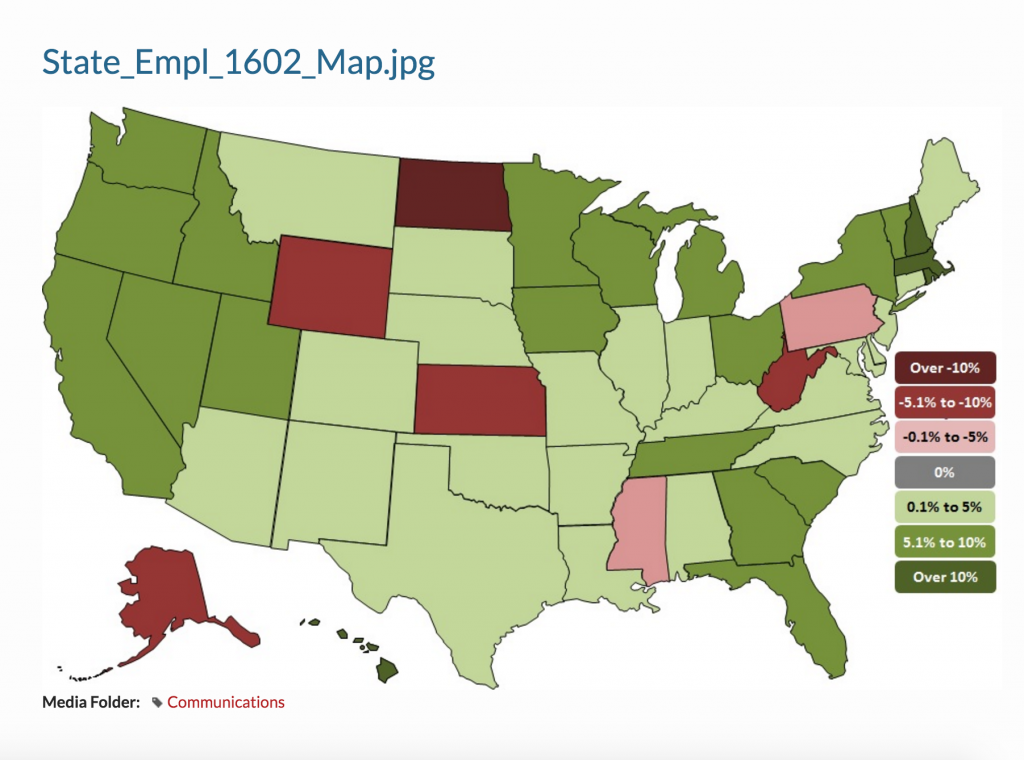Florida contractors reported a 6.2 percent increase in employment in the past year, ranking the state 12th in the nation in employment growth, the Associated General Contractors of America (AGC) has reported in its analysis of Labour Department data.
The state had 418,600 construction employees in February,2015. The numbers increased to 446,200 (seasonally adjusted) in February 2016, a decline from the previous month (January, 2016) with 446,200 but an increase from December 2015, with 444,600.
Overall, 43 states and the District of Columbia reported increased employment over the past 12 months; and 27 states added jobs from January to February.
Association officials said the pullback in energy prices and farm income appeared to be dampening demand for construction in some states while firms in other states continue to expand.

“In most of the country, construction continues to outpace other industries in adding jobs,” said Ken Simonson, chief economist for the association. “Contractors remain upbeat about demand for many types of projects, but they are having difficulty finding enough qualified workers.” Simonson noted that job openings spiked in January, according to the latest survey from the Bureau of Labor Statistics.
California added the most construction jobs (53,800 jobs, 7.6 percent) between February 2015 and February 2016. Other states adding a high number of new construction jobs for the past 12 months include Florida (25,800 jobs, 6.2 percent), New York (19,100 jobs, 5.5 percent) and Massachusetts (14,600 jobs, 11.0 percent). Hawaii added the highest percentage of new construction jobs during the past year (19.1 percent, 6,300 jobs), followed by Rhode Island (14.6 percent, 2,400 jobs), Massachusetts and New Hampshire (10.2 percent, 2,400 jobs).
North Dakota lost the highest percent and total number of construction jobs (-14.5 percent, -5,300 jobs). Other states that lost jobs for the year include Alaska (-8.2 percent, -1,500 jobs), Wyoming (-7.2 percent, -1,700 jobs), West Virginia (-6.9 percent, -2,300 jobs), Kansas (-6.5 percent, -4,000 jobs), Mississippi (-1.7 percent, -800 jobs) and Pennsylvania (-1.4 percent, -3,200 jobs).
“The states with the steepest declines in construction jobs during the past 12 months have been hurt by the pullback in oil and gas drilling, coal mining and farm income,” Simonson noted. “A wide variety of influences boosted construction employment in other states, including weather that was more favorable this February than a year ago.”
California added the most construction jobs between January and February (12,300 jobs, 1.6 percent). Other states adding a high number of construction jobs include Washington (5,500 jobs, 3.1 percent), New York (4,500 jobs, 1.2 percent), Michigan (3,900 jobs, 2.6 percent) and Minnesota (3,200 jobs, 2.7 percent). Washington added the highest percentage of construction jobs during the past month, followed by Kentucky (2.9 percent, 2,200 jobs), Minnesota and Michigan.
Construction employment declined in 21 states and D.C. during the past month and held steady in Rhode Island and Tennessee. Texas shed more construction jobs than any other state (-5,300 jobs, -0.8 percent), followed by Louisiana (-4,700 jobs, -3.2 percent), Illinois (-2,400 jobs, -1.1 percent), Kansas (-1,900 jobs, -3.2 percent) and Florida (-1,800 jobs, -0.4 percent). Maine lost the highest percentage of construction jobs between January and February (-3.6 percent, -1,000 jobs), followed by Louisiana and Kansas.
Association officials said the new hiring figures show contractors continue to be able to find and hire new workers despite widespread reports of labor shortages. But they cautioned that labor shortages may undermine overall employment levels in the sector in the near future. “Without additional programs to recruit and prepare new workers, especially at the high school level, firms may not be able to find new workers as demand for their services continues to expand,” said Stephen E. Sandherr, the association’s chief executive officer.
View the state employment data by rank and state.







